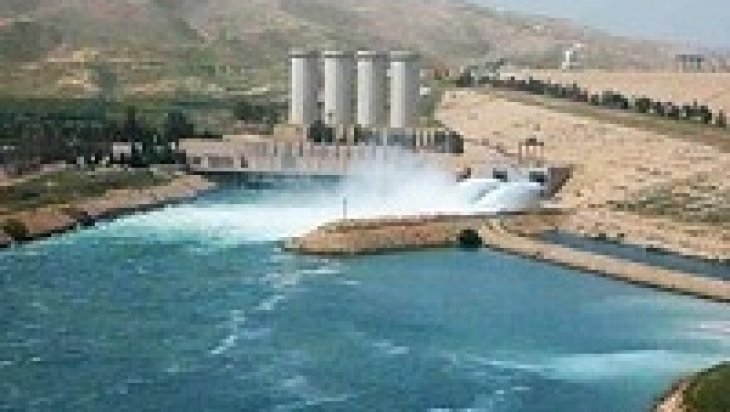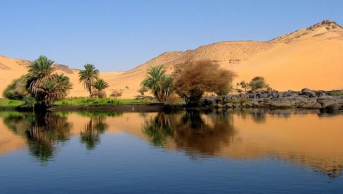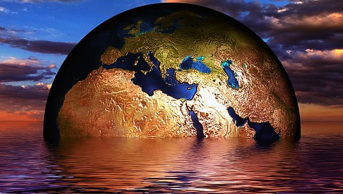Water in the Islamic World: A Mixed Picture with some Deepening Challenges

The Organization of Islamic Cooperation (OIC), has recently published a report on the water situation in Islamic World. The main aim of the OIC has been stated as to safeguard and protect the interests of the Muslim world. This report, as long as the members of the organization take it seriously, would be a highly effective contribution within this vision.
There are 57 members of the OIC featuring high variability in terms of climatic and hydrologic fundamentals. Water availability varies across the OIC members, accordingly. On the demand side, the demand in OIC members exceed the water demand levels that have been experienced by non-OIC developing countries. This, combined with relatively low level of water infrastructure development around the OIC countries on average, puts an increasing pressure for authorities to satisfy the needs of people and economic sectors, agriculture in particular. Another critical water problem related to inadequate infrastructure development is the continuing challenge of sanitation influencing many OIC countries.
The Report highlights that the total renewable water resources in OIC countries appear to be “rather modest when compared to the OIC population”. The Report demostrates that all groups of countries other than OIC world have better standings in terms of water availability: “[T]he share of OIC countries in the world’s total renewable water resources is 13.3%, which is less than their share in the world total population of 23.3%. In contrast non‐OIC developing countries and developed countries share of the world’s total renewable water resources are higher than their share of the world’s population. Non‐OIC developing countries share of the world’s total renewable water resources is 69.3% while their share of the world’s population is 62.8%. Also, developed countries share of the world’s total renewable water resources is 17.4% while their share of the world’s population is 14.1%.” Therefore, despite well-watered individual OIC members, the whole situation is not very bright.
Another significant point that the Report highlights is the unused potential of wastewater treatment and reuse in OIC countries. According to the Report’s data, less than 15 percent of the collected wastewater is treated in OIC countries on average. This figure in developed countries, on the other hand,reaches to 75.4 percent, demonstrating a sharp contrast. In specific, OIC members in Latin America, Sub-saharan Africa South Asia have lowest ratios of wastewater treatment. Therefore, treatment of the collected wastewater is a great opportunity for increasing the water availability in these countries.
The OIC water report rightfully discusses the challenge of population increase as a big challenge in terms of water demand. The population trends in OIC members represent a stark contrast with other groups of countries in the world. To illustrate, the share of OIC countries in world population continues to increase from 19.4% in 1990 to a projected 25.8% by 2030. However,“the share of non‐OIC developing countries and developed countries in the world population is in steady decline”. Increases in incomes through economic growth and urbanization are other crucial factors for rises in water demand in OIC members.
In terms of water scarcity, the following members of the OIC remain below the 1000 cubicmeters threshold, which is the generally accepted figure in determining water scarcity:
Kuwait, United Arab Emirates, Qatar, Saudi Arabia, Yemen, Maldives, Bahrain, Libya, Jordan, Palestine, Algeria, Djibouti, Oman,Tunisia, Egypt, Syria, Burkina Faso, Morocco, Lebanon, and Sudan. In addition to these, a cluster of six countries namely Pakistan, Somalia, Uganda, Comoros, Nigeria, and Uzbekistan are experiencing regular “water stress", and are very close to more serious “water scarcity”.
The Report underlines that “the success of OIC countries in providing access to improved drinking water sources lags behind that of other country groups”. Figures provide details: 83.7% of the population in OIC countries have access to improved water sources. In contrast, in non‐OIC developing countries, 91.3 percent, and in developed countries, 99.6 percent of the population have access to improved sources of drinking water. It is evident that there is a big room for improvement for OIC countries in the sense that one percent change in this figure correspons to new connections for 14 millions of people to an improved drinking water source.
The OIC report was released at a time when Americans were issuing warnings about the collapse of the Mosul Dam, the greatest one, in Iraq. This can be read as an ironic coincidence in the sense that an out-of-region actor was warning about a grave problem of management of one of the most important water work in one of the major OIC members, namely Iraq. In short, it is high time for OIC members, making up some one fourth of the total world population, to study the findings of this report with an aim of improving their water situation before they are forced by natural (e.g. climate chage) and democraphic (e.g. continuing population increases) factors to pay an unreasonably higher price.









